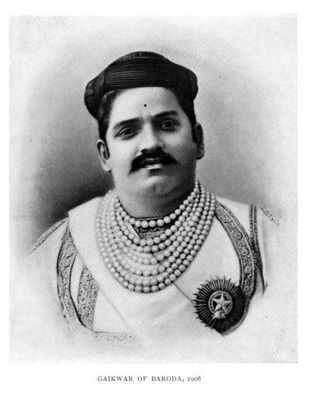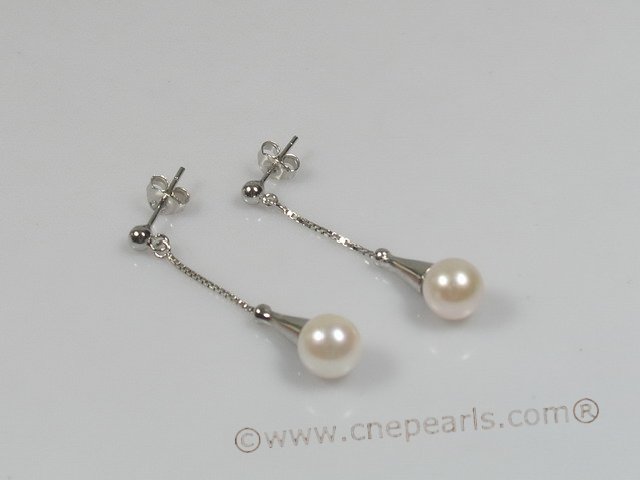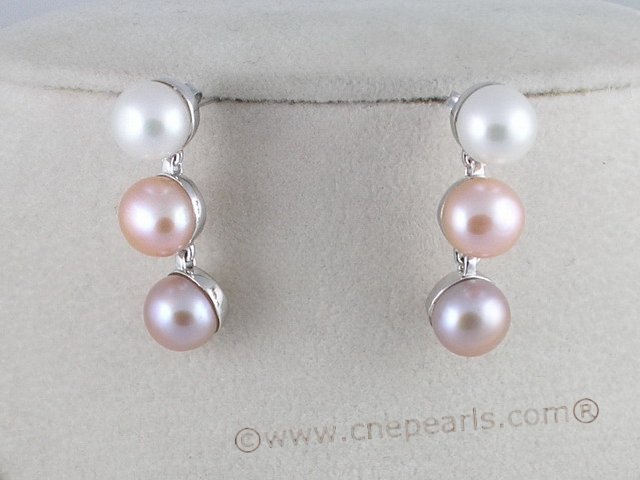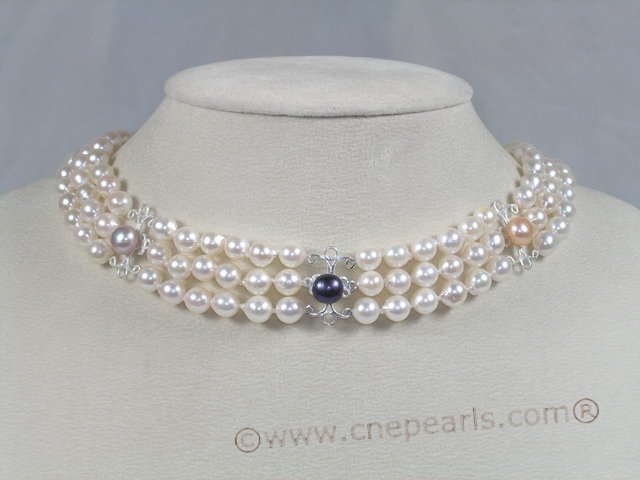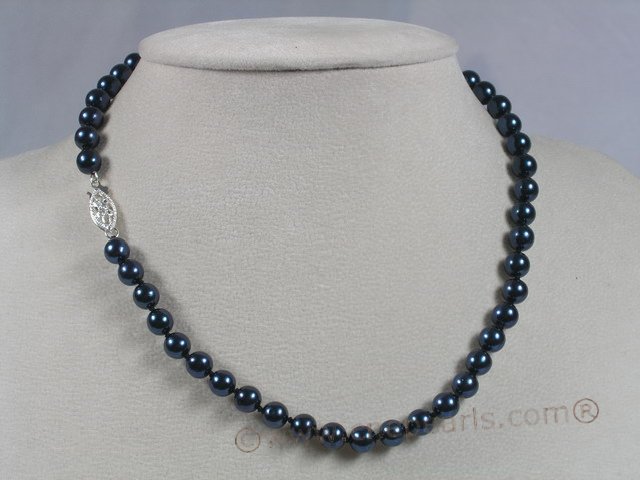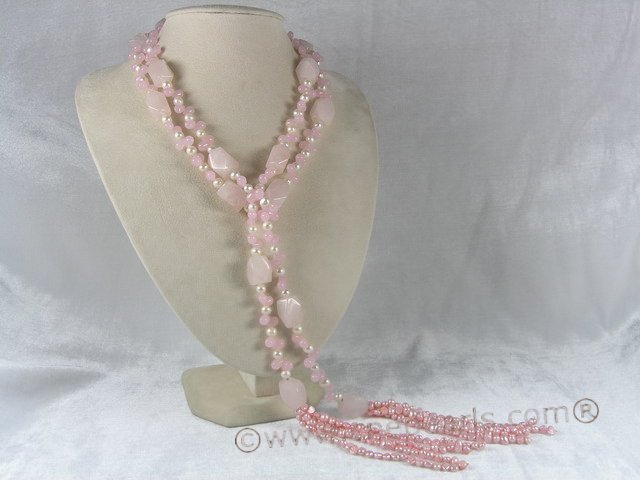Akoya pearls
Pearls from the Akoya saltwater oyster which is the mainstay of the Japanese pearl industry. Now also farmed by China and other countries.
Baroque pearls
Irregular shaped pearls of all shapes and sizes, neither round nor symmetrical. The surface is usually uneven. Most are inexpensive, but some have come to be the centrepiece for very expensive pieces of jewellery.
Bib
A pearl necklace of more than three concentric strands.
Biwa pearl
Cultured freshwater pearls grown in Lake Biwa in Japan.
Black-lipped oyster
The oyster famous for the Tahitian pearl which is found in the South Pacific in and around Tahiti and French Polynesia.
Black pearls
A natural coloured dark pearl grown in the black-lipped oyster. The colour is black, light black/silvery or a dark grey, although other very dark colours such as the rarer peacock green are also referred to as black pearls. Natural colour black pearls are rare and most of the cheaper black pearls, especially freshwater, are dyed.
Blemishes
Little marks, bumps, scars or irregularities on a pearl’s surface that give a pearl strand its personality, although heavy marking will lower its value.
Blister pearls
In reality, a natural pearl which occurs when a parasite intrudes through the outer shell of a mollusc. The mollusc secretes nacre over the irritant, cementing it to the shell itself. Blister pearls are usually irregular in shape.
Blue pearl
A dark-coloured pearl whose colour derives from foreign contaminants in the nacre, or between the nacre and the shell bead nucleus. Typically, blue pearls are naturally coloured dark Akoya pearls, which may be blue or other dark colours.
Choker length
A pearl necklace 14 - 16 inches (35 - 40 cm) in length.
Colour
The type of oyster or mussel is a key determinant in colour. Different geographical areas have different molluscs which produce different colours.
Cultivation
The process whereby a mussel or oyster is seeded, cared for and harvested to produce a cultured pearl.
Cultured pearls
Pearls formed by the insertion of a piece of mantle tissue, with or without a nucleus, into the host oyster or mussel.
Dog collar
A choker length formed from multi-strands.
Freshwater pearls
Pearls predominantly flesh-nucleated typically in mussels in several countries around the world, notably China, Japan and the USA.
Gold-lipped oyster
These oysters produce beautiful light yellowish or golden pearls. They are found mostly around South East Asian countries such as Thailand, the Philippines and Indonesia.
Graduated strand
A strand of pearls starting with small pearls at one end and gradually getting bigger until the centre where the largest pearl will lie. The pearls then graduate back to the other end.
Half pearls
Whole pearls that have had one side removed to remove blemishes. If about three quarters of the pearl remains, it is known as a three-quarter pearl.
Imitation pearls
Pearls manufactured to look like natural or cultured pearls. Various types exist. Solid or hollow glass beads coated with pearl essence derived from fish scales are one type, whilst lacquer covered beads are another. Cheaper varieties are created from plastic.
Iridescence
This refers to the optical effect whereby prismatic colours, similar to the ones seen on oil films, can be seen. Iridescence is the play of lustrous colours, which may be like those of the rainbow or a subtle combination of colours such as pink, blue, green, and silver.
Keshi pearls
These are small roundish natural pearls formed naturally in the soft tissue of the mollusc during the cultivation process from small pieces of the mollusc’s own shell. The mollusc treats these pieces as irritants and coats them with nacre.
Knotting
Small knots tied between each pearl in a strand to prevent them rubbing together and to avoid the loss of pearls if the necklace breaks.
Lustre
The appearance/shininess of a pearl’s surface judged by its ability to reflect light. One of the most important factors in judging and pricing pearls.
Mabe pearls
Formed when a half-bead is cemented to the mollusc's inner shell. The mollusc covers the half bead with nacre and when the shell is cut off, the bead is exposed at the back. The bead is removed, the pearl cleaned (to prevent deterioration) and the remaining hole filled with paste, wax or sometimes with another bead and then covered with a mother-of-pearl backing. Mabe pearls must only be used in closed-back settings. Also referred to as a half-pearl or cultured blister pearl.
Mantle
The part of a mollusc’s soft tissue that secretes nacre. This tissue is also used to nucleate and stimulate pearl formation in freshwater pearls.
Mallorca
A well-known type of imitation pearls from the Spanish island of the same name. Also known as Majorcan pearls, they are quite popular in the USA. Many people believe them to be real pearls when, in fact, they are high quality imitations.
Matinee length
A pearl necklace 20 - 26 inches (50 - 66 cm) long.
Mikimoto pearls
A leading brand of pearls founded by Kokichi Mikimoto, the Japanese man credited as the creator of cultured pearls.
Mollusc
An invertebrate with a soft body often protected by a shell such as clam, oyster and mussel.
Mother-of-pearl
The smooth, hard pearly lining on the interior of oyster and mollusc shells, famous for buttons and small decorative objects. It is the same substance as nacre which forms pearls.
Nacre (‘NAY-ker’)
The pearly substance secreted by the mantle of certain molluscs to form a pearl.
Natural pearls
Formed entirely by an act of nature and without any assistance from man. An irritant such as a parasite or other foreign object enters the body and is covered in concentric layers of nacre inside the mollusc.
Near round pearls
Close to round shape and slightly rounder than off-round shape.
Non-nucleated pearls
Typically refers to freshwater pearls whereby mantle tissue from another mollusc is inserted to stimulate pearl growth. Refers to tissue-nucleated pearls.
Nucleated pearls
A nucleus is inserted into a mollusc to speed up the pearl growth. Acting as the irritant, the nuclei is covered by nacre.
Off-round pearls
Slightly flattened or slightly oval in shape.
Opera length
A pearl necklace 28 - 36 inches (70 - 90 cm) in length.
Orient
The pearly lustre seen on pearls or mother-of-pearl shells. Also known as iridescence.
Oriental pearls
Natural pearls found in the waters of the Persian Gulf. Due to pollution, production is almost non-existent nowadays.
Pearl
A natural pearl by definition, whereas cultured pearls should be referred to as ‘cultured pearl’ However, as cultured pearls now make up over 95% of world pearl production, it has become common to use the term ‘pearl’ to refer to cultured pearls.
Princess length
A pearl necklace 16 - 20 inches (40 - 50 cm) in length.
Rope length
A pearl necklace 40inches (100cm)
Round pearls
Are perfectly round in shape.
Semi-baroque pearls
Typically are not round and not irregular but are somewherein between, such as potato, pear, drop, button and egg shapes.
Shape
A key criterion in pearl pricing and quality. Most pearls are divided into four major categories: round, off-round, semi-baroque and baroque.
Silver-lipped oyster
A South Sea type found usually around Australia which produces large and beautiful white and silvery white South Sea pearls.
South Sea cultured pearls
The area usually defined as South Sea extends from South East Asia, Thailand, Burma, Indonesia and Philippines through the coastal waters of Northern Australia to the South Pacific, French Polynesia and Tahiti. They are known for their large and expensive pearls which can be grown relatively quickly.
Torsade
Otherwise known as twisters whereby you twist multi-strand pearls around each other ? a popular way to wear freshwater pearl strands.
Uniform strand
A pearl strand whose pearls are almost the same size as each other.







